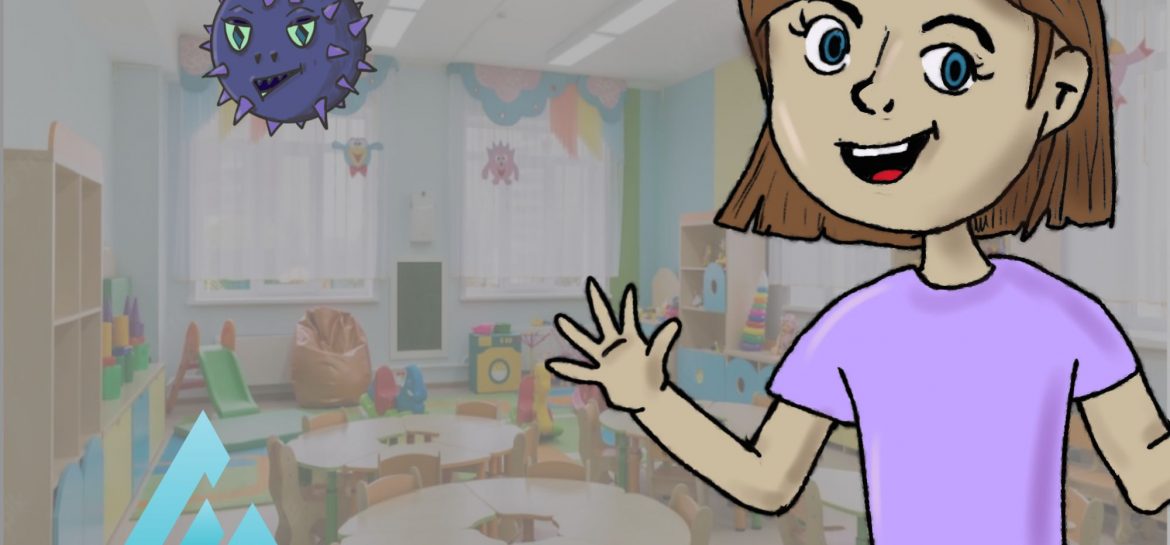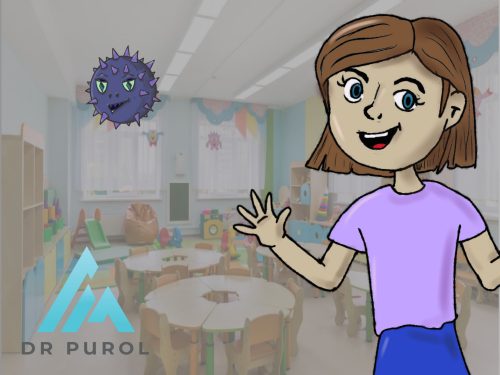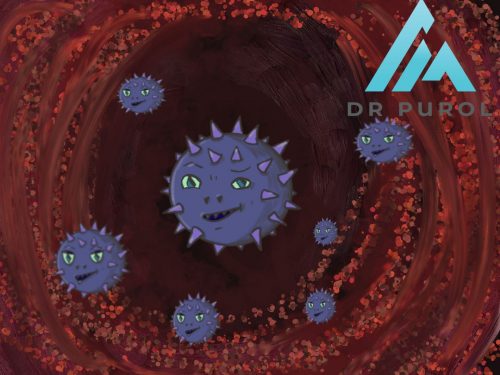
Is it possible to build and strengthen the child’s immunity?
Infections in children are always a current topic. In the autumn and winter season, most of the medical advice concerns getting sick. One infection is cured and another appears. As parents, we lose patience.
“How is it possible that the child is sick all the time – there was an improvement for only 2 days and then the same thing again?”
“ He has been sick for a month now. What can be done to strengthen the immunity of this child, because he is still sick..?”
Sometimes a parent follows the advice of a grandmother, sometimes an advertisement is heard on TV. And the administration of syrups for immunity begins. But which ones to choose, which methods work?
Speaking of resistance, we mean the immune system. It is our body’s defense system. It is made up of various cells (e.g. white blood cells) and many different chemicals. Thanks to this, it is everywhere – throughout the body. The reactions of the immune system are divided into:
- specific– that is, for a specific pathogen
- non-specific– a general, supportive one.
In a threat situation, our body is the first to launch the mechanisms of innate immunity, which actively support the specific immunity, effectively protecting against the development of infection.
Immunology is a very complex and fascinating field of medicine.
But what to do in the infection season, when the child’s body is exposed to a lot of different pathogens from many sources, so that the child does not get sick so often? You can find a video about what syrups for immunity are worth recommending on my YT channel – here https://youtu.be/dPslxpNkbug
Spoiler alert – there is no one amazing drug to support immunity. There is no drug that will keep you from getting sick. However, you can help the body a little to learn about intruders, you can stimulate this system to act a little more – have an immunomodulatory effect. Here are proven methods of building resilience:
Learn to recognize – building specific immunity.
Vaccination is the best form of prevention – that is, preparation for defense against the virus, when we meet it someday. At the moment, there is no better preparation in medicine to defend against the virus than a vaccine.
Worse – there are no effective drugs for most viruses. So it’s better to get vaccinated. How is it working? In short: a vaccine is nothing more than a piece of a virus or bacteria, which, when administered to our body by intramuscular route, immediately goes into the blood – the immune system must react to the intruder – but it is so weak, incomplete, unarmed. So these are just exercises. But ok… It does its job and that’s how it remembers how to fight him. And it is this trained memory that allows in the future, in the event of contact with the disease, to recreate the situation and quickly effectively stop the infection.
In Poland, we have a very well-developed calendar of free vaccinations. Thanks to vaccinations, we got rid of several dangerous viral diseases for good!
Stimulate action – non-specific immunity.
Oral bacterial lysates- Non-specific vaccines (intranasal, oral) are used in the prevention and treatment of recurrent infections of the respiratory tract, paranasal sinuses and the middle ear. They are bacterial immunostimulators that stimulate and mobilize the body’s defenses. They increase the number of natural antibodies. It is important to know that these preparations do not treat acute infections and are not a substitute for antibacterial therapy. However, they can support it and therefore can be used in parallel with antibiotics. Their role is to prevent disease states, reduce the incidence of illness and the severity of symptoms.
Bacterial immunostimulators in the form of bacterial lysates are killed bacterial cells or pieces of them. Bacteria that most often cause respiratory infections. Taken orally, they encounter GALT in the digestive tract (The gut-associated lymphoid tissue). Then there is an increase in antibodies that protect the mucosa of the digestive tract and at the same time the respiratory system. The resulting antibodies are directed against the bacterial components of the lysate. It’s logical. It is difficult to explain, however, the fact that non-specific vaccines also protect against viruses. The mechanism of action is based on toll-like receptors (TLRs). Simply put, the mere presence of any microbial particle (in this case of bacterial origin) is enough to stimulate the body’s natural defenses, which can be called a state of immune readiness. In children, low TRL expression is the cause of increased incidence of respiratory infections. The number of these receptors increases with the number of contacts with pathogens. When reviewing scientific publications on the use of bacterial lysates, there is a lot to choose from. According to several meta-analyses, summarizing the results of studies over time, it has been shown to reduce the frequency of infections and the need for antibiotic therapy by an average of 40% (meta-analyses from 2006, 2012 and 2022). Researchers also noted the influence of age, in young children the treatment gave better results. Of course, in this case they do not provide a 100% guarantee of avoiding the disease. That is why there is talk of a short-term immune memory after the treatment.
Can’t prepare – avoid.
It seems simple and logical – if you don’t want to get sick do not come into contact with a sick person. At the present time, when each of us has experienced a lockdown during the SARS-Cov2 virus pandemic, we know that this is an effective method. But this also applies to most infections, because most are transmitted by droplets. The level of risk of contracting the disease after contact may vary, it does not change the fact that it is the sick person who infects. By the way, some viral diseases can infect even a few days before any symptoms appear, e.g. chickenpox virus.
So, to prevent getting sick, we recommend limiting direct contact with a sick person or avoid large groups of people.
And translating this principle into everyday life – if a child attends a nursery or kindergarten – of course he is in contact with viruses and bacteria. It only takes one child with symptoms of infection to infect the rest of the group… Ok! He has to go to the facility, so he may get sick. But I have a proposal to reduce the risk of contact with infections to the necessary minimum as part of disease prevention. Maybe it is worth limiting other human groups, where the risk of meeting a coughing person is high. I mean shopping malls, closed playgrounds for children, and closed water parks etc. Or when planning contact with family, make sure that no one has any signs of infection before we lock ourselves in the same room with the coughing person. Of course, the older the child, the better his immune system is trained, with time the incidence of infections decreases.
Ensure work comfort – a healthy lifestyle.
And finally, what is probably the quintessence of building immunity, i.e. take care of the right conditions for the functioning of the immune system. The immune system needs good working conditions to function properly. What does it mean?
- Eat healthy.
- Move a lot.
- Spend time outside (in the absence of an air pollution alert).
- Drink the right amount of fluids.
- Get enough sleep.
- Ensure adequate supplementation of vitamin D and DHA – in the absence of sufficient amounts in the diet (i.e. the administration of cod liver oil works). There are many studies showing that vitamin D 3 is needed for proper immunity.
- Check the status of health during the regular health check- up – because it is during the examination of a healthy child that we can catch any health problems. eg iron deficiency.
No immunity syrup bought in a pharmacy will improve immunity as well as a healthy lifestyle and immunomodulation with scientifically proven methods.
Will we ensure that the child is completely free of infection by using all these methods? Definitely NO. But with scientifically proven methods, we can reduce their amount and duration.
author: Agnieszka Purol MD








